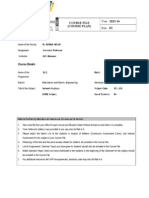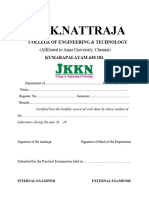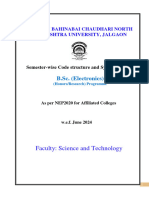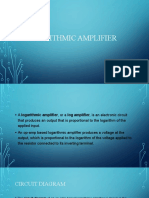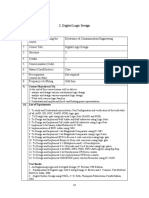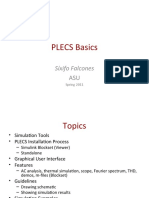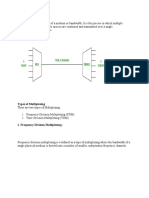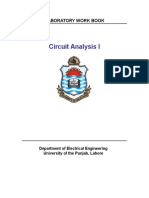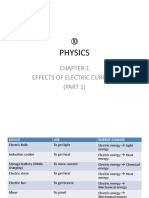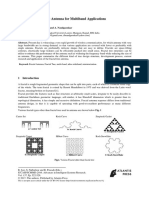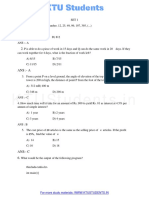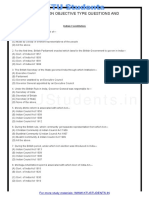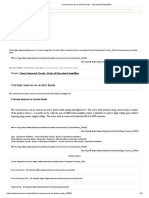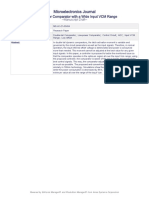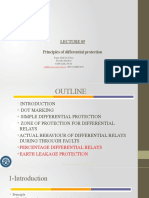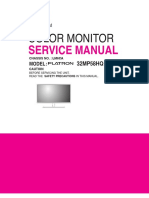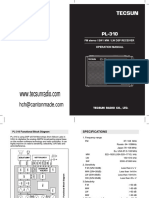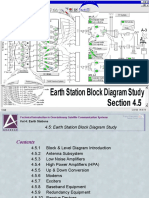0% found this document useful (0 votes)
626 views5 pagesEC Lab Manual
This document summarizes two experiments in basic electronics:
1) Studying series and parallel resistive circuits to verify Ohm's law and voltage/current divider rules. Different resistor values were used to measure voltages and currents.
2) Measuring Lissajous patterns between two signals to calculate the capacitor value required for a 600 phase shift when connected in series with a 10k resistor. The circuit was set up and the CRO was used to observe inputs/outputs in XY mode to calculate the phase angle.
Uploaded by
sruthyCopyright
© © All Rights Reserved
We take content rights seriously. If you suspect this is your content, claim it here.
Available Formats
Download as PDF, TXT or read online on Scribd
0% found this document useful (0 votes)
626 views5 pagesEC Lab Manual
This document summarizes two experiments in basic electronics:
1) Studying series and parallel resistive circuits to verify Ohm's law and voltage/current divider rules. Different resistor values were used to measure voltages and currents.
2) Measuring Lissajous patterns between two signals to calculate the capacitor value required for a 600 phase shift when connected in series with a 10k resistor. The circuit was set up and the CRO was used to observe inputs/outputs in XY mode to calculate the phase angle.
Uploaded by
sruthyCopyright
© © All Rights Reserved
We take content rights seriously. If you suspect this is your content, claim it here.
Available Formats
Download as PDF, TXT or read online on Scribd
/ 5
